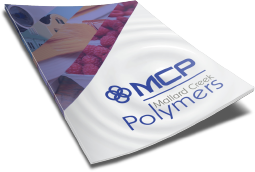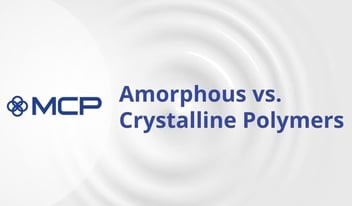
Four Questions for Tailoring a Polymer Emulsion Recipe, Part Two
Chemists will ask multiple questions whenever they’re asked to create a recipe for a polymer emulsion for a specific application. In this two-part series, we’re discussing the insights related to the four big questions that they ask in these..
Chemists will ask multiple questions whenever they’re asked to create a recipe for a polymer emulsion for a specific application. In this two-part series, we’re discussing the insights related to the four big questions that they ask in these situations.
The third question that a chemist will ask is, “What particle size does the application require?”
A chemist may use one or more of three different systems to determine particle size:
1) Seeding - Seeds behave similarly to micelles, but are much easier to control.
2) Micelles with anionic surfactants – this system creates a somewhat broader range in particle size that looks like a bell shaped curve. As you narrow the particle size, the viscosity increases. A broad particle size range has a lower viscosity.
3) Resin supported – very much like seeds in order to achieve a smaller particle size.
Typically synthetic styrene-butadiene polymers emulsions range in size from 100 nanometers to 300 nanometers. Chemist have the ability to design polymers at very tiny particle sizes (less than 50 nm), but only when there are no other requirements such as viscosity or solids. Certain applications require a small particle size for performance, but this is not easy to achieve when in combination with a low viscosity and high solids (usually ~50% total solids of polymer).
There is a balancing act of cost versus performance for the consideration of both manufacturer and customer. The manufacturer may be able to make a polymer with a small particle size at the expense of creating waste. One critical design criteria for a recipe is to build products that manufacturing can make without generating excess waste.
A final question that’s important to ask when designing a polymer is, “How will the pH be adjusted?”
Chemists keep styrene-butadiene polymer emulsions at an approximate pH of 2-3 during polymerization, in order to place the carboxylic acids correctly. They increase the pH to neutralize the acid. They then adjust the pH using either sodium hydroxide (NaOH) or ammonia (NH3). Sodium hydroxide (often referred to as caustic) is a strong base; therefore, less is required to adjust the pH of the emulsion. Caustic is also low-odor, making the polymer useful in indoor applications. The downside to using caustic is that it is water-sensitive, due to the sodium ions. Ammonia is a weak base; therefore, more is required to adjust the pH of the emulsion. Ammonia will flash off after application, but there may be a strong odor that is typically not preferred for applications that may be applied indoors.
In addition to neutralizing the acid, raising the pH of the emulsion helps to buffer formulations with high filler content such as calcium carbonate (CaCO3). Raising the pH of the emulsion polymer puts the pH of the latex in the buffering range for the filler.
At Mallard Creek Polymers, our polymer chemists work with customers in multiple industries, including paints and coatings, adhesives, construction, packaging, and more, to design custom recipes for polymer emulsions that meet their specific application requirements. Call us today to get started with your recipe.

 Construction
Construction
 Nonwovens
Nonwovens
 Adhesives
Adhesives
 Textiles
Textiles
 Printing & Packaging
Printing & Packaging
 Paper
Paper
 Paints & Coatings
Paints & Coatings






